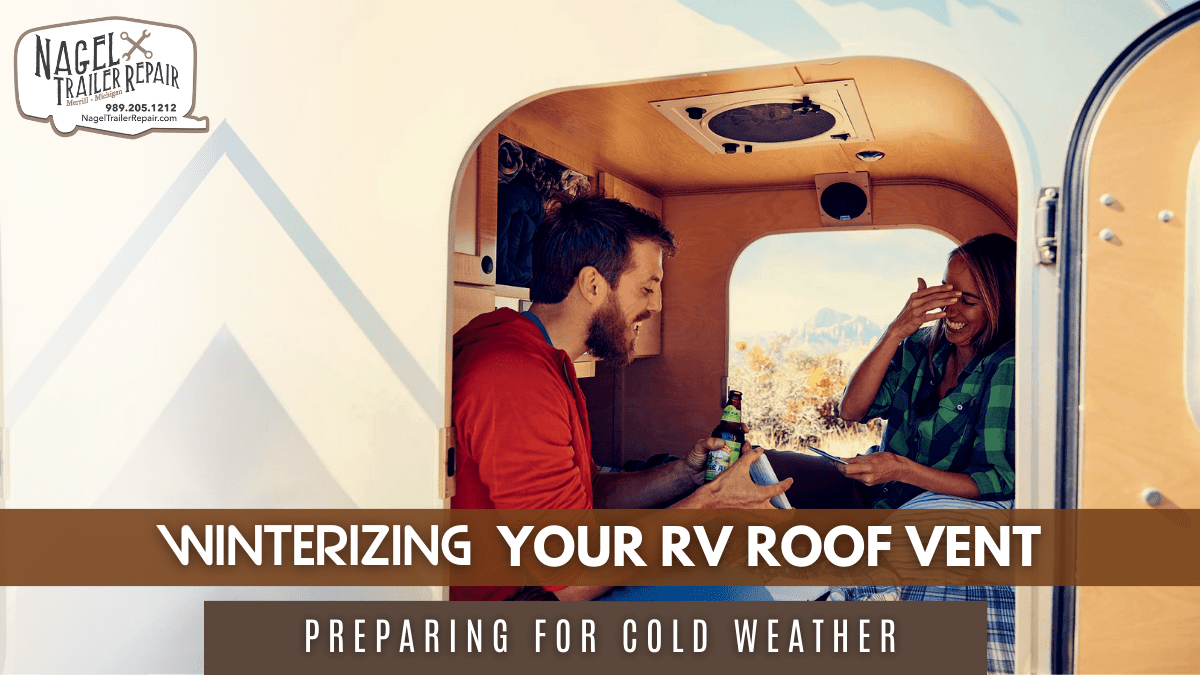The arrival of winter signals a time for RV enthusiasts to prepare their vehicles for colder temperatures. One crucial element often overlooked in winterization routines is the RV roof vent. While seemingly small, a properly winterized roof vent can significantly enhance comfort, prevent damage, and maintain the integrity of your RV throughout the chilly season.
Importance of RV Roof Vent Winterization
The roof vent in your RV plays a pivotal role in maintaining a comfortable and healthy environment inside the vehicle. It regulates airflow, allows for ventilation, and helps control moisture levels. During winter, however, neglecting this essential component can lead to various issues, such as:
1. Condensation: As temperatures drop, condensation can accumulate within the RV, causing mold, mildew, and even structural damage if left unattended.
2. Freezing:Water trapped in the vent system can freeze, potentially damaging the vent components or hindering its functionality.
3. Heat Loss: An improperly sealed or insulated vent can result in heat escaping from the RV, leading to increased energy consumption and discomfort inside.
Step-by-Step Guide to Winterize Your RV Roof Vent
Winterizing your RV roof vent is crucial to protect it from harsh winter conditions. Following these below mentioned steps ensures your RV roof vent stays in top condition during the winter months.
1. Inspect the Ventilation System: Begin by thoroughly examining the roof vent, checking for any signs of damage, cracks, or wear and tear. Ensure the vent cover and seals are in good condition.
2. Clean the Ventilation Components: Remove debris, leaves, and any obstructions from the vent and its surrounding areas. Clean the vent cover and screens to allow for unobstructed airflow.
3. Seal Potential Drafts: Use weather-stripping or sealant to seal any gaps around the vent area. This step is crucial in preventing cold drafts from entering the RV.
4. Insulate the Vent: Consider using insulating materials such as foam inserts or vent cushions designed specifically for RVs. These help minimize heat loss and prevent cold air infiltration.
5. Add Vent Covers or Insulated Caps: Install vent covers or insulated caps to provide an extra layer of protection against the elements. These accessories help shield the vent from snow, rain, and freezing temperatures.
6. Apply Lubrication: Lubricate moving parts of the vent, such as hinges and mechanisms, using a suitable lubricant. This prevents them from seizing up due to cold temperatures.
7. Consider Using Vent Insulation Pillows: Specialized vent insulation pillows or cushions can be inserted into the vent openings to block cold air while still allowing for some airflow.
8. Test for Proper Functionality: Before the onset of severe winter conditions, test the vent to ensure it opens and closes smoothly and that the seals remain intact.
Additional Tips for Winter RV Maintenance
As winter approaches, go beyond the basics for comprehensive RV maintenance. These below mentioned additional steps ensure your RV is winter-ready, minimizing potential issues and maximizing your winter travel enjoyment.
1. Monitor Interior Humidity Levels: Invest in a humidity monitor to keep track of moisture levels inside the RV. Maintain optimal humidity to prevent condensation buildup.
2. Keep the RV Heated: Ensure your RV’s heating system is in good working condition. Use space heaters or additional heating sources to maintain a comfortable temperature.
3. Check Insulation throughout the RV: Inspect and reinforce insulation in other areas of your RV, including windows, doors, and plumbing, to minimize heat loss.
4. Regularly Check and Maintain Seals: Periodically inspect and reseal all exterior seams, windows, and doors to prevent drafts and water leaks.
Conclusion
In summary, winterizing your RV roof vent is paramount, especially in regions with harsh winter conditions like Michigan. By following a step-by-step guide, including cleaning, inspecting, sealing, and adding insulation, you safeguard your RV against the cold. Installing vent covers and using insulating materials such as vent pillows further fortifies your defense.
Remember, a well-maintained RV roof vent not only prevents heat loss but also safeguards against potential damage caused by snow, ice, and freezing temperatures. Additional measures, such as tire maintenance, pipe insulation, and using RV antifreeze, contribute to an all-encompassing winterization strategy.
Investing time and effort in these preparations ensures that your RV is not only ready for the cold but also minimizes the risk of costly repairs. As you gear up for winter adventures in Michigan, a properly winterized RV, with a well-protected roof vent, becomes your reliable companion, offering comfort and peace of mind throughout the chilly season. Safe travels and enjoy the beauty of winter with confidence in your RV’s resilience against the elements.

